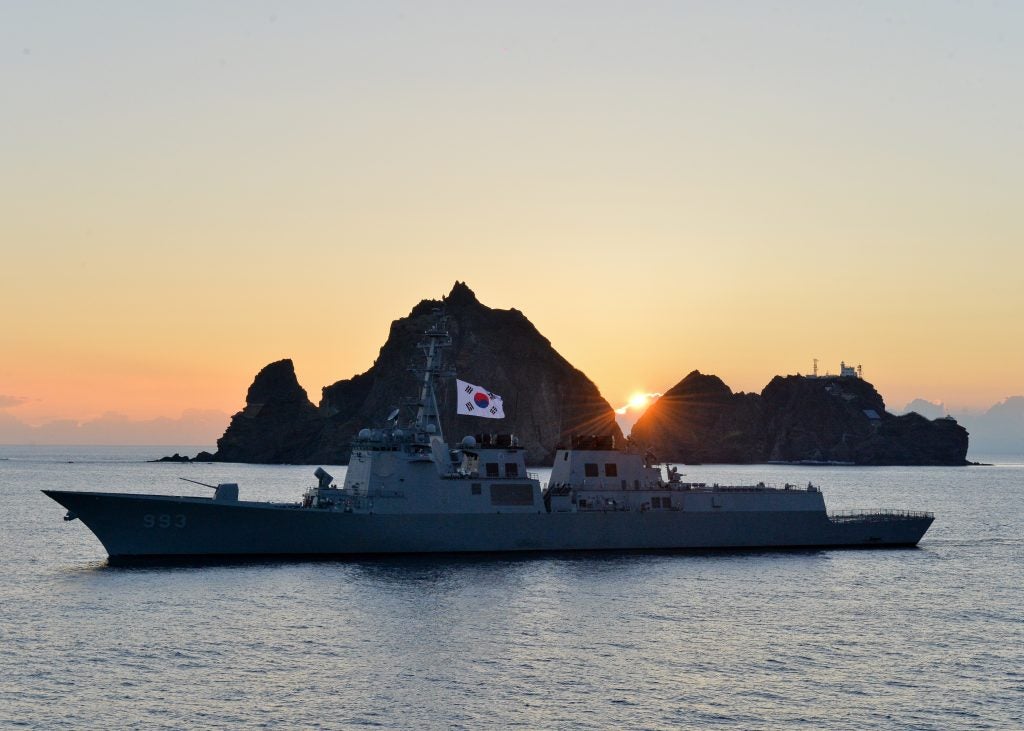South Korea to Build Three BMD Capable Destroyers
South Korea has one of the most practical needs for Ballistic Missile Defense capability in the world. To that end, the next three King Sejong the Great/DDX-III guided missile destroyers will be built with the ability to engage ballistic missile targets. Its neighbor to the north has thousands of all sizes, some of which may carry nuclear warheads. To its north and west, China has thousands more. The current Sejong the Great class guided missile destroyers have the equipment but not the software for the Ballistic Missile Defense mission.
The three existing Sejong the Great destroyers are the first in Korean service with a phased array radar. The previous classes, anti-submarine focused helicopter carrying destroyers (DDH), do not have the ability to scan the sky with their radar at the near vertical angles required for the BMD mission. The SPY-1 array, identical to those on many other international surface combatants, give Korea the technical ability to detect and track ballistic missiles at sea.

Standard Missile 3, also known as RIM-161, is the second piece of the capability puzzle. The only in-service sea-based Anti-Ballistic Missile (ABM) missile in the world, it is also one of the best ABM weapons in the world today. While the SM-3 is still in active development to enhance its capabilities, it will give the ROK Navy a critical capability it is currently missing.
In order to meet this goal, the next three destroyers, as of yet undesignated or named, will be built with BMD capability from the start. These ships are expected to cost approximately $3.3 billion USD in total. This is comparatively cheap when opposed to the current price of BMD capable Arleigh Burke destoryers, which often cost more than $1.5 a piece. The ships will be built by Hyundai Heavy Industries. It is also planned that the three exisiting AEGIS destroyers will be retrofitted to become BMD capable.
All of this will tie into the in-development Korea Air and Missile Defense network. The KAMD is planned to give all of the Republic of Korea comprehensive missile defense, and includes American THAAD batteries.

